Purple Pyrex glass measuring cup: 20,700 ppm Lead (90 is unsafe*) +175 ppm Cadmium (Yum! What are you baking with?)
For those new to the Lead Safe Mama website:
Tamara Rubin is a multiple-federal-award-winning independent advocate for childhood Lead poisoning prevention and consumer goods safety, and a documentary filmmaker. She is also a mother of Lead-poisoned children (two of her four sons were acutely Lead-poisoned in 2005).
- Tamara owns and runs Lead Safe Mama, LLC — a unique community collaborative woman-owned small business for childhood Lead poisoning prevention and consumer goods safety.
- Since 2009, Tamara has been conducting XRF testing (a scientific testing method) using the exact instrumentation employed by the U.S. Consumer Product Safety Commission to test consumer goods for toxicants (specifically heavy metals — including Lead, Cadmium, Mercury, Antimony, and Arsenic).
- Since July of 2022, the work of Lead Safe Mama, LLC has been responsible for 5 product recalls (FDA and CPSC).
- All test results reported on this website are science-based, accurate, and replicable.
- Recent notable press… There has been too much to mention already in 2024! Please check out our press page to see some of the amazing coverage of our work so far this year!
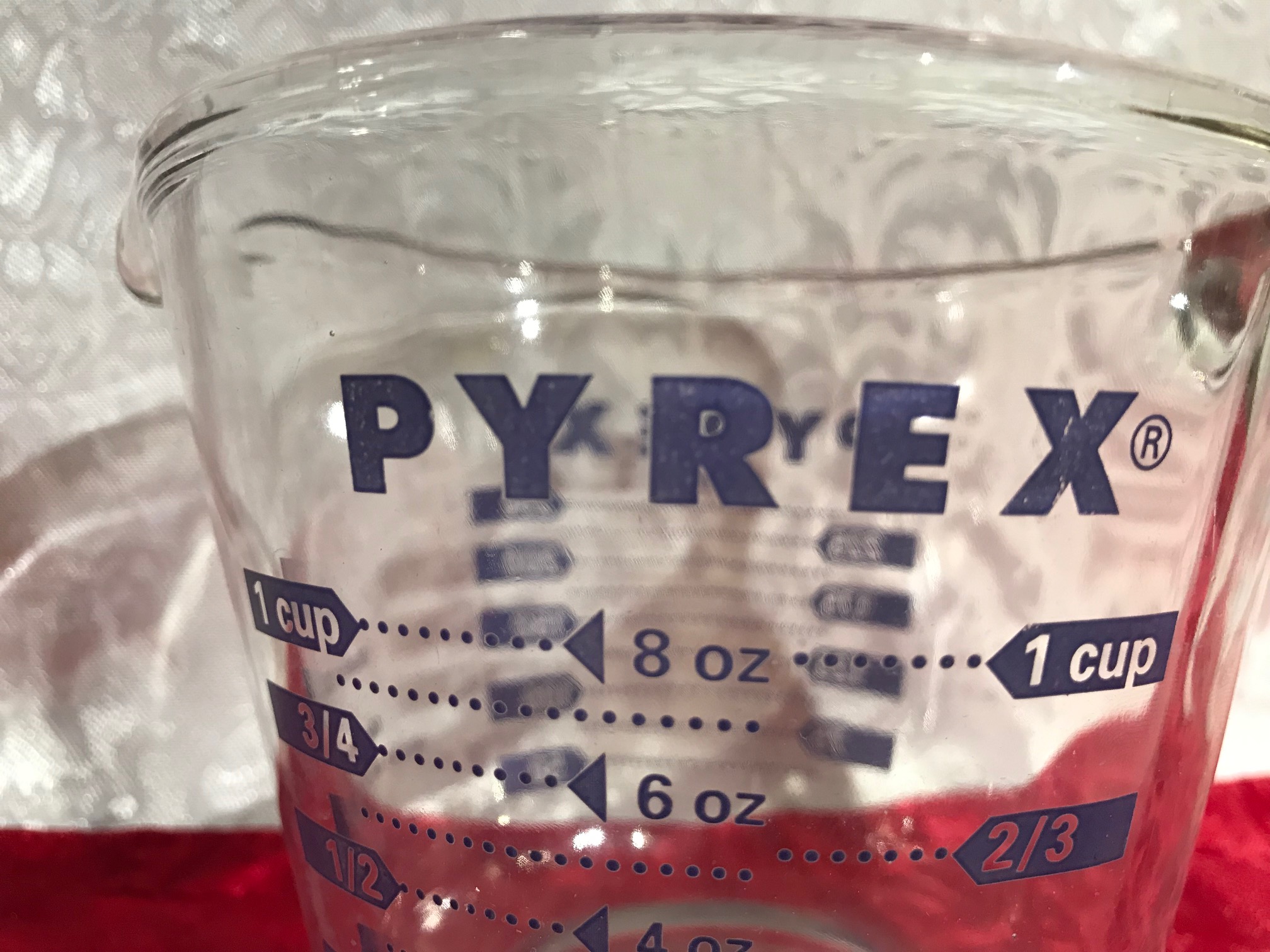
I found this gem during a home consultation with a family near Chicago earlier this year — and (!) I had never before seen one of these Pyrex measuring cups with markings in this deep purple color (in the photos, it looks a bit like it could be dark blue, but in person, it’s definitely quite purple!). It was purchased new sometime between 2006 and 2010. I was also super surprised to see how high-Lead the paint was, as this isn’t really that old!
While I don’t know what year things changed (if someone could help me figure that out, that would be excellent!), the older design of the Pyrex logo is the one on this cup — pictured above (the purple writing) — where the letters are sharp, blocky, and spaced apart. The newer glass measuring cups made by Pyrex have the logo you can see in the image below (the cup with red writing). On these newer ones, the lettering is more rounded with the letters nested together. The ones with this newer design (below) tend to be Lead-free (but instead of Lead in the new paint formulation (on the red painted ones at least), they have replaced it with Cadmium, which is also toxic and known to cause cancer!). <sigh>
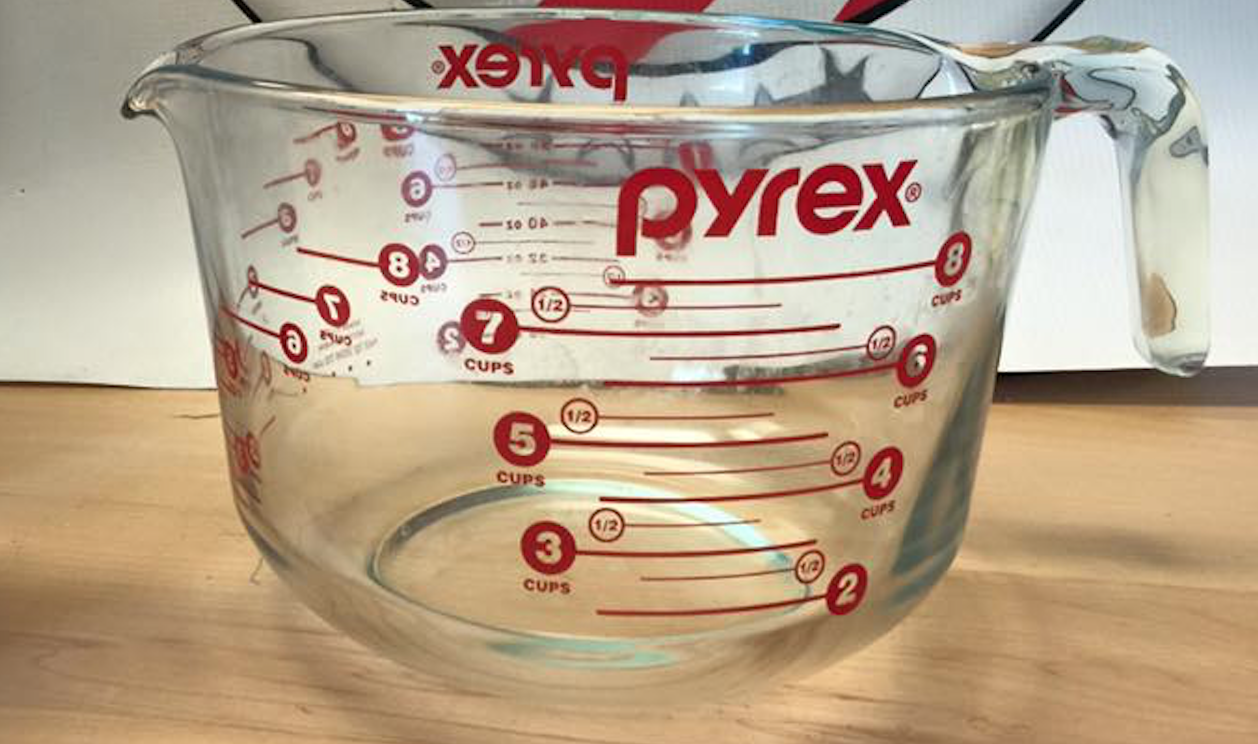
When tested with an XRF instrument, the Pyrex measuring cup pictured here had the following readings:
Test on the purple printed words on the outside of the glass:
- Lead (Pb): 20,700 +/- 500 ppm
- Cadmium (Cd): 175 +/- 15 ppm
- Zinc (Zn): 5,658 +/- 211 ppm
- Titanium (Ti): 1,902 +/- 140 ppm
- Platinum (Pt): 276 +/- 116 ppm
- Cobalt (Co): 8,089 +/- 362 ppm
Test on the clear glass of the cup:
- Vanadium (V): 72 +/- 22 ppm
- Titanium (Ti): 103 +/- 28 ppm
Test results reported on this website are accurate, science-based, and replicable. Testing was completed for a minimum of 60 seconds per component and repeated multiple times to confirm the results. Each set of results found was similar to the results sets noted above. Metals not detected by the XRF instrument (when used in “Consumer Goods” mode) are not listed. All metals detected by the instrument on each separate component tested are listed above.
*How much Lead is unsafe?
The paint on the outside of glass measuring cups is not regulated at all (for total Lead content) — as they are not manufactured or marketed as “items intended for use by children.” For context: The amount of Lead considered unsafe (and illegal) in an item expressly manufactured and sold as something to be used by children is anything 90 ppm Lead or higher in the paint, glaze, or coating, and anything 100 ppm Lead or higher in the substrate. Given this came in at over 20,000 ppm Lead in the exterior paint, it should be considered unsafe (and illegal) — if it was made today and expressly made “for use by children” (I say “should” because the CPSC apparent sees things differently, as they are still allowing high-Lead painted markings on baby bottles — link!). Currently in the U.S., cookware/ kitchenware is not regulated for Lead or Cadmium content as it is not considered “items intended for use by children” and, as such, there are no limits for toxicants content in the paint, glaze, or coating (as detectable with XRF technology).
Some additional reading:
- To see more clear glass items Lead Safe Mama has tested, click here.
- To see more measuring cups we have tested, click here.
- To read my recommendations for safer measuring cup choices, click here.
- To see more test results for Pyrex items, click here.
As always, please let me know if you have any questions.
Thank you for reading and sharing this work!
Tamara Rubin
#LeadSafeMama
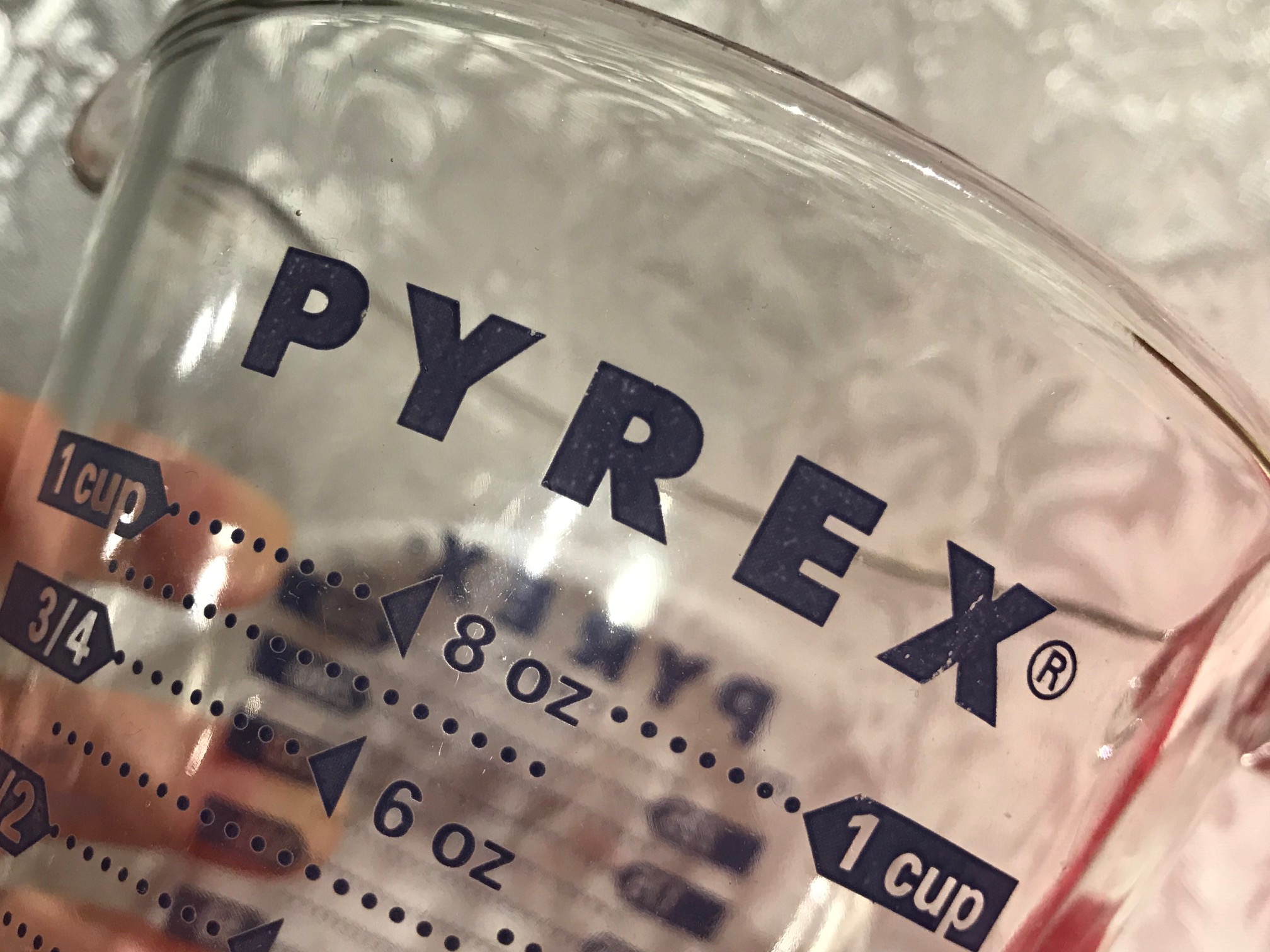
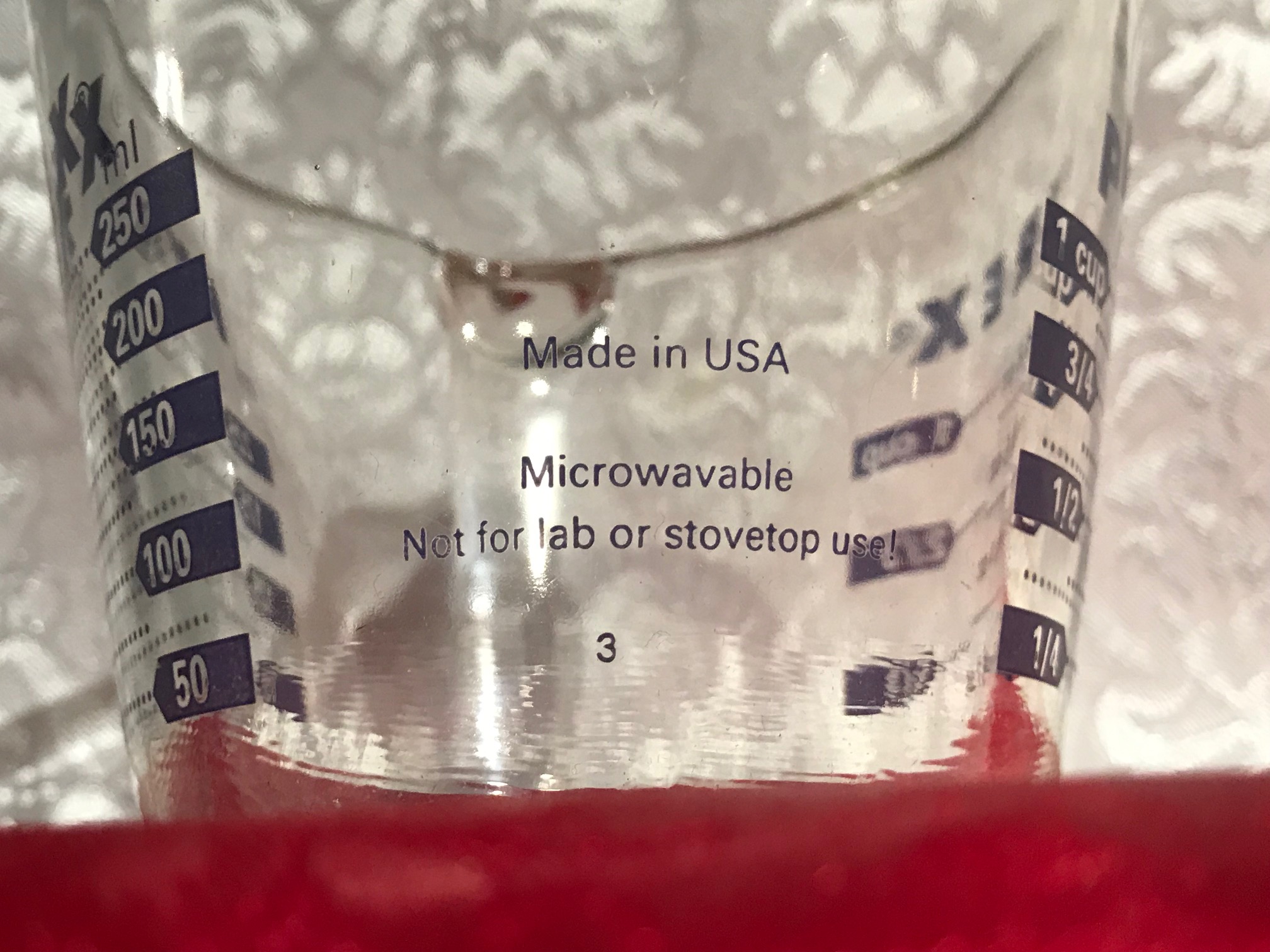
Never Miss an Important Article Again!
Join our Email List









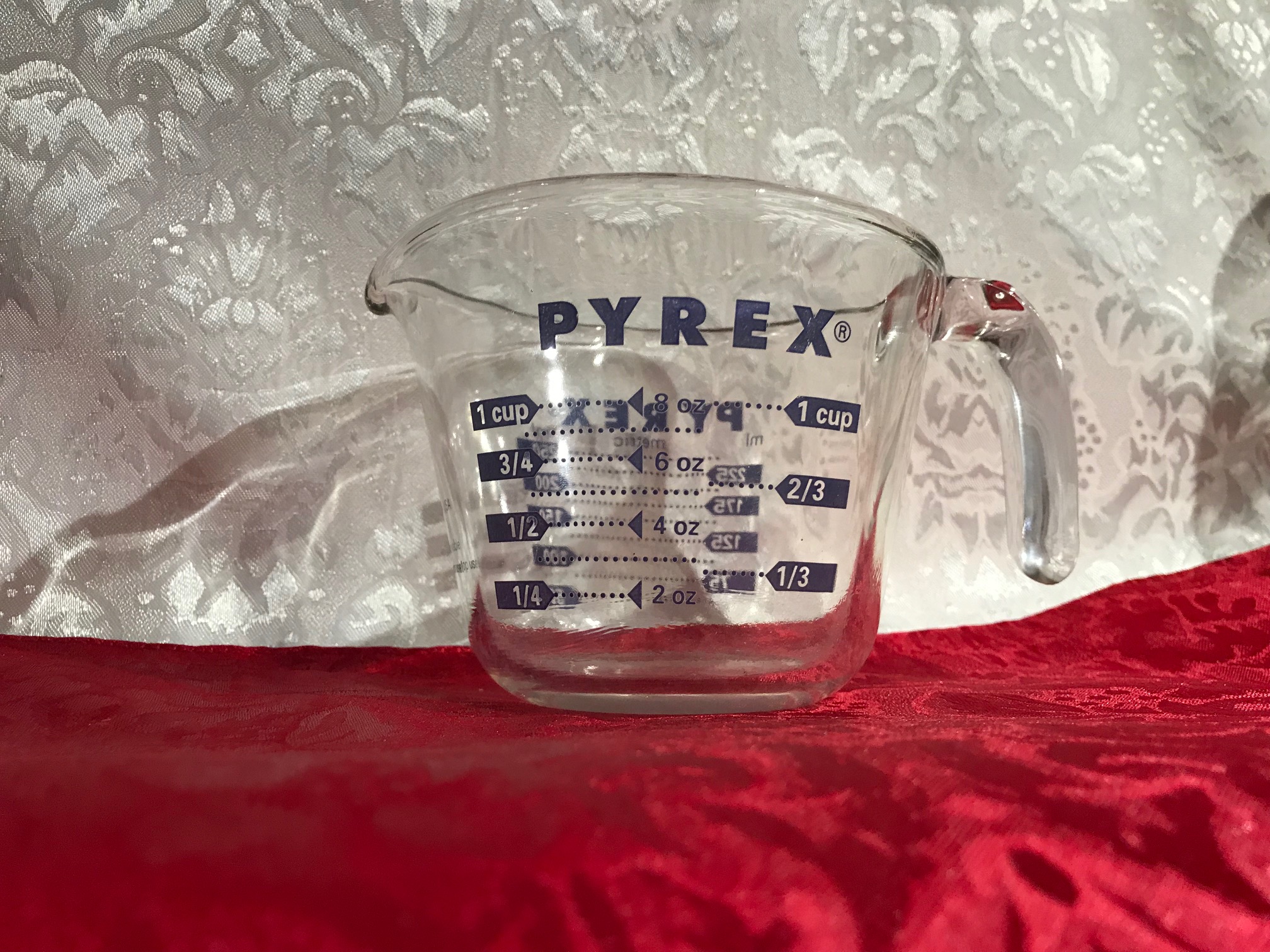

Thymeless Hetbs pattern by Corelle
I just found this pattern and bought some because I love the high sides on the plates.
I do not see testing on this pattern, and do not know year it was made or where.
Thanks for any infouou may have.
This is mind boggling! Thanks for the info. Do I understand correctly that the metals are in the paint on the outside of the cup? So theoretically anything placed inside the cup would not be exposed to the metals, right? That is a key question (for me). Of course, there should not be ANY metals allowed on the outside!
This ^^^ is what I want to know, too.
The answer is in this post: https://tamararubin.com/2020/07/if-the-lead-is-only-on-the-outside-of-my-dish-measuring-cup-mixing-bowl-etc-why-does-it-matter-that-it-has-lead/
I had the same question.
I’m also wondering if there is a lead (& toxic metal) max you advise for adults. I have no children, but I want to test my stuff. Do I have to get rid of everything above 90ppm. I dont think I can afford to do that. Would you be willing to put together a cheat sheet of acceptable levels for adults & children that we can print as a reference. I agree zero is the goal, but a it would be helpful to have a guide as I test & decide what to get rid of ; Otherwise I’m going to get overwhelmed & go bonkers over everything. Lol. Thank you. I appreciate what you are doing.
For example,
TESTED PRODUCTS ARE SAFEST AT OR BTWEEN THESE LEVELS
CHILD. ADULT
LEAD
CADMIUM
ETC..
So how do you measure anything hot? What can I use to measure? Specifically, I measure water for my oatmeal, heat it in the measuring cup and then pour hot water over spoon to melt coconut oil into oatmeal! Many of the borosilicate glass measuring cups on Amazon have customer comments saying that the measurement markers wash off both in the dish washer and by hand washing!
We use this: https://tamararubin.com/2022/12/my-husbands-favorite-lead-free-glass-measuring-cup-juicer/
I do the same thing. We have been using this since 2002 as a wedding gift. Sigh, I wonder if that exacerbated my migraines.
Very possibly. Headaches are a very common symptom of Trace lead exposure.
T
I have the exact same Pyrex measuring cups you tested in the deep blue/purple shade, same fonts etc. It was a wedding gift for us April 2002.
Do the markings inside the Cuisinart pots contain lead. They are the measurements of the inside of the pot of different levels , for example 1 cup, 2 cups etc.
Cuisinart said they are not painted, they are “embossed ” and do not contain lead.
I am skeptical.
Do you have any information on this? The pot is stainless steel and the lettering is dark gray on the inside of the side of the pot.
Thank you!
The new ones (past 5+ years) do not have Lead.